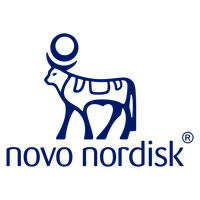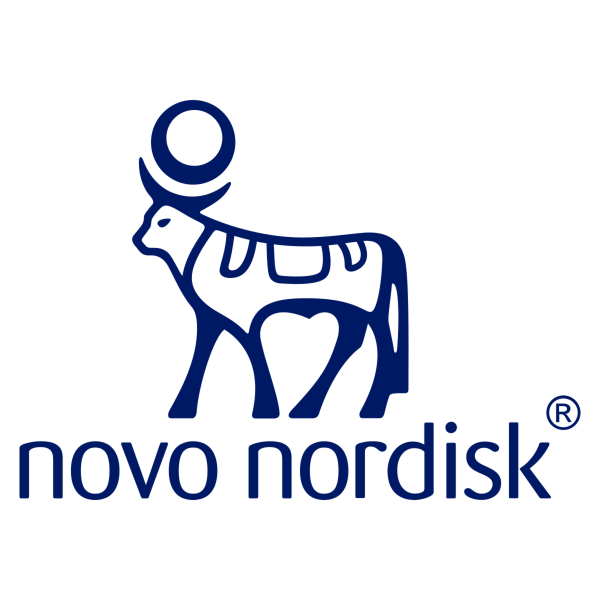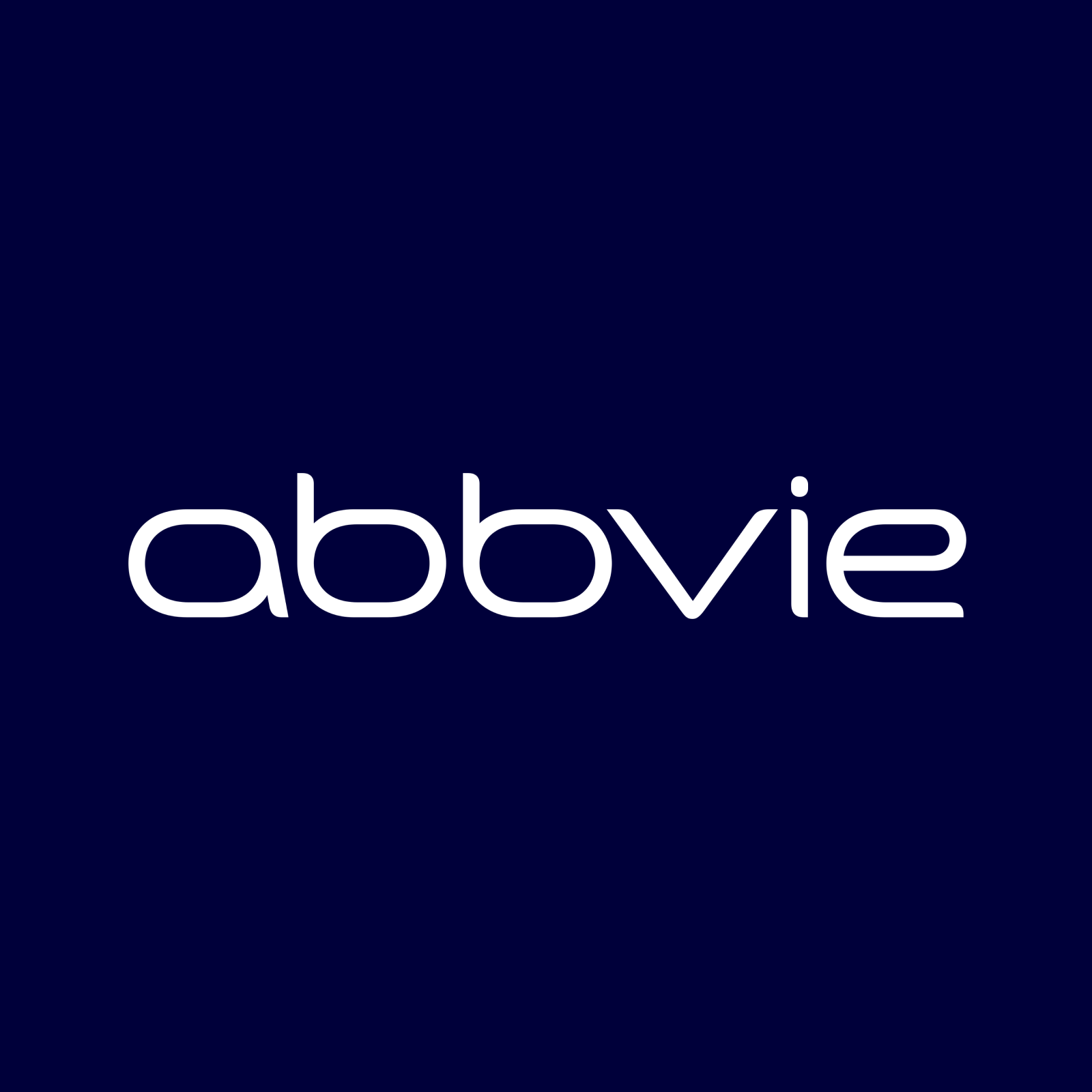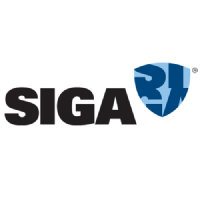
Novo Nordisk A/S
CSE:NOVO B


| US |

|
Johnson & Johnson
NYSE:JNJ
|
Pharmaceuticals
|
| US |

|
Berkshire Hathaway Inc
NYSE:BRK.A
|
Financial Services
|
| US |

|
Bank of America Corp
NYSE:BAC
|
Banking
|
| US |

|
Mastercard Inc
NYSE:MA
|
Technology
|
| US |

|
Abbvie Inc
NYSE:ABBV
|
Biotechnology
|
| US |

|
Pfizer Inc
NYSE:PFE
|
Pharmaceuticals
|
| US |

|
Palantir Technologies Inc
NYSE:PLTR
|
Technology
|
| US |

|
Nike Inc
NYSE:NKE
|
Textiles, Apparel & Luxury Goods
|
| US |

|
Visa Inc
NYSE:V
|
Technology
|
| CN |

|
Alibaba Group Holding Ltd
NYSE:BABA
|
Retail
|
| US |

|
3M Co
NYSE:MMM
|
Industrial Conglomerates
|
| US |

|
JPMorgan Chase & Co
NYSE:JPM
|
Banking
|
| US |

|
Coca-Cola Co
NYSE:KO
|
Beverages
|
| US |

|
Realty Income Corp
NYSE:O
|
Real Estate
|
| US |

|
Walt Disney Co
NYSE:DIS
|
Media
|
| US |

|
PayPal Holdings Inc
NASDAQ:PYPL
|
Technology
|
Utilize notes to systematically review your investment decisions. By reflecting on past outcomes, you can discern effective strategies and identify those that underperformed. This continuous feedback loop enables you to adapt and refine your approach, optimizing for future success.
Each note serves as a learning point, offering insights into your decision-making processes. Over time, you'll accumulate a personalized database of knowledge, enhancing your ability to make informed decisions quickly and effectively.
With a comprehensive record of your investment history at your fingertips, you can compare current opportunities against past experiences. This not only bolsters your confidence but also ensures that each decision is grounded in a well-documented rationale.
Do you really want to delete this note?
This action cannot be undone.

| 52 Week Range |
616.3852
1 028
|
| Price Target |
|
We'll email you a reminder when the closing price reaches DKK.
Choose the stock you wish to monitor with a price alert.

|
Johnson & Johnson
NYSE:JNJ
|
US |

|
Berkshire Hathaway Inc
NYSE:BRK.A
|
US |

|
Bank of America Corp
NYSE:BAC
|
US |

|
Mastercard Inc
NYSE:MA
|
US |

|
Abbvie Inc
NYSE:ABBV
|
US |

|
Pfizer Inc
NYSE:PFE
|
US |

|
Palantir Technologies Inc
NYSE:PLTR
|
US |

|
Nike Inc
NYSE:NKE
|
US |

|
Visa Inc
NYSE:V
|
US |

|
Alibaba Group Holding Ltd
NYSE:BABA
|
CN |

|
3M Co
NYSE:MMM
|
US |

|
JPMorgan Chase & Co
NYSE:JPM
|
US |

|
Coca-Cola Co
NYSE:KO
|
US |

|
Realty Income Corp
NYSE:O
|
US |

|
Walt Disney Co
NYSE:DIS
|
US |

|
PayPal Holdings Inc
NASDAQ:PYPL
|
US |
This alert will be permanently deleted.
 Novo Nordisk A/S
Novo Nordisk A/S
Earnings Call Analysis
 Q1-2024 Analysis
Novo Nordisk A/S
Q1-2024 Analysis
Novo Nordisk A/S
In the first quarter of 2024, Novo Nordisk achieved remarkable results, with a 24% increase in total sales driven by strong performances across different segments. Notably, North American operations saw a 35% growth, while international operations grew by 11%. The primary drivers of this growth were the GLP-1 treatments for diabetes and obesity, indicating high demand for these products.
Sales in the diabetes care segment were particularly impressive, increasing by 32%. This growth was largely fueled by a 37% increase in North American operations and a 22% rise internationally. Novo Nordisk's GLP-1 products have been very successful, with Ozempic maintaining a 47.2% market share and Rybelsus increasing its share to around 15%. As a result, Novo Nordisk’s global market share in diabetes rose to 34%, surpassing their strategic goal of one-third by 2025.
Obesity care sales surged by 42%, driven by the successful launch of Wegovy, which saw exceptional growth in North America (44%) and international markets (35%). Despite a decline in Saxenda sales, Wegovy’s performance was a major win, with sales exceeding DKK 1 billion in the quarter. Efforts to balance supply and demand for Wegovy through volume-capped launches indicate a strategic approach to market expansion.
Hidden.
Hidden.
Hidden.














 You don't have any saved screeners yet
You don't have any saved screeners yet

Good day, and thank you for standing by. Welcome to the Q1 2024 Novo Nordisk AS Earnings Conference Call. [Operator Instructions] Please be advised that today's conference is being recorded. I would now like to hand the conference over to your speaker today, Daniel Bohsen, CVP, Investor Relations. Please go ahead, sir.
Thank you. Welcome to this Novo Nordisk Earnings call for the first 3 months of 2024. My name is Daniel Muusmann Bohsen, and I'm the Head of Investor Relations at Novo Nordisk. With me today, I have CEO of Novo Nordisk, Lars Fruergaard Jørgensen; Executive Vice President and Head of Commercial Strategy and Corporate Affairs, Camilla Sylvest; Executive Vice President and Head of North America Operations, Doug Langa; Executive Vice President and Head of Development, Martin Holst Lange, and finally, Chief Financial Officer, Karsten Munk Knudsen. All speakers will be available for the Q&A session.
Today's announcement and the slides for this call are available on our website, novonordisk.com. Please note that this call is being webcasted live, and a recording will be made available on our website as well. The call is scheduled to last 1 hour.
Please turn to the next slide. The presentation is structured as outlined on Slide 2. Please note that all sales and operating profit growth statements will be at constant exchange rates unless otherwise specified.
Please turn to the next slide. We need to advise you that this call will contain forward-looking statements. These are subject to risks and uncertainties that could cause actual results to differ materially from expectations. For further information on the risk factors, please see the company announcement for the first 3 months of 2024 and the slides prepared for this presentation.
With that, over to you Lars for an update on our strategic aspirations.
Thank you, Daniel. Please turn to the next slide. In the first three months, we have delivered 24% sales growth and 30% operating profit growth. Furthermore, we have raised the outlook for the full year. I would like to start this call by going through the performance highlights across our strategic aspirations before handing over the word to my colleagues. Starting with our focus on purpose and sustainability, we are now serving almost 42 million patients with our diabetes and obesity treatments. Our total carbon emission rose by 32% as compared to the first quarter of 2023. This was primarily driven by our increased investments in capital expenditure to meet the high demand for our products. Compared to the first quarter of 2019, carbon emissions from operations and transportation decreased by 31%. To uphold our commitment to being a sustainable employer, we expanded the number of women in senior leadership positions to 41%, compared with 39% in the first quarter of 2023. Within R&D, we are pleased with the successful completion of the FLOW Kidney Outcomes Trial and the approval of the Wegovy label expansion in the U.S. based on the Select Cardiovascular Outcomes Trial. Martin will come back to this and our overall R&D milestones later. We also announced the agreement to acquire 3 fill-finish sites from Novo Holdings in connection with a transaction where Novo Holdings has agreed to acquire Catalent. This is expected to enable us to reach many more people living with serious chronic diseases. The quarterly sales growth reflects solid commercial execution across operating units. Both operating units contributed to sales growth driven by demand for our GLP-1 treatments for both diabetes and obesity. Camilla and Doug will go through the details per therapy area later. Karsten will go through the financials, but I'm very pleased with the performance so far this year. Now I would like to hand the word over to Camilla who will give us an update on the commercial execution.
Thank you. Lars. Please turn to the next slide. In the first three months of 2024, our total sales increased by 24%. The sales growth was driven by both operating units with North America operations growing 35% and international operations growing 11%. In the US, sales growth was positively impacted by gross to net sales adjustments related to prior years. Our GLP-1 sales in diabetes increased 32% driven by North America operations growing 37% and international operations growing 22%. Insulin sales increased by 9% driven by North America operations growing 23% and international operations growing 5%. Obesity Care sales increased 42% driven by North America operations growing 44% and international operations growing 35%. In both geographies, growth was driven by Wegovy, partly offset by declining Saxenda sales. Doug will talk more about North America obesity performance, but in IO Wegovy sales exceeded DKK 1 billion in the quarter. We continue to roll out Wegovy in a sustainable manner with volume-capped launches to balance supply and demand. Rare disease sales decreased by 3%, which Doug will also speak more to later. Please turn to the next slide. With 24% sales growth in Diabetes Care, we are growing faster than the total diabetes market. As a result, our global diabetes value market share increased to 34%, which is above our strategic aspiration of reaching one-third of the global diabetes value market in 2025. The increase reflects market share gains in both North America operations and international operations. In international operations, please turn to the next slide. In international operations, Diabetes Care sales increased by 12% in the first three months of 2024, which was primarily driven by GLP-1 sales growing 22%. Novo Nordisk is the market leader in international operations with a GLP-1 value market share of around 70%. Ozempic continues its GLP-1 market leadership with 47.2% market share. We are also pleased to see Rybelsus increasing its market share to around 15%, driven by solid uptake across geographies. And with that, I will hand over the word to Doug.
Thank you, Camilla. Please turn to the next slide. Sales in North America is driven by healthy prescription volume growth of the GLP-1 class of around 15% in the first quarter of 2024, compared to the first quarter of 2023. Novo Nordisk is taking market share, meaning we are growing more than the market, fueled by our strategic GLP-1 brands of Ozempic and Rybelsus.
Measured on total prescriptions, Novo Nordisk continues to be the market leader with around 56% market share. Sales growth of Ozempic was negatively impacted by periodic supply constraints in the beginning of the first quarter. Please go to the next slide. To safeguard continuity of care for Wegovy, we reduced the release of lower dose strengths in May of 2023, which continued throughout the remainder of last year. In the beginning of this year, we gradually started increasing the supply of the lower dose strengths. I am pleased to see that this has been reflected in prescriptions, and we are now seeing more than 27,000 new-to-brand prescriptions and approaching the peak total prescriptions seen last year. Wegovy still has broad market access with more than 50 million covered lives. Importantly, around 10 million vulnerable patients have access to Wegovy via Medicaid in more than 15 states. Following an expanding market access and our focus on reaching more patients, Wegovy net prices declined in the first quarter. While we continue to gradually increase the overall supply throughout the rest of 2024, our primary focus remains on ensuring continuity of care for patients who have already initiated treatment. Next slide, please. Our rare disease sales decreased by 3%. Sales in international operations declined by 18%. This was partly offset by a 20% sales increase in North America operations, reflecting the launch of Sogroya and positive gross to net adjustments related to prior years in the US. Sales of rare blood disorders decreased by 4%, driven by NovoSeven and hemophilia A products, partly countered by increased hemophilia B sales. Sales of rare endocrine disorder products increased by 1%. We are working on reestablishing full supply of rare endocrine disorder products, following a reduction of manufacturing output in 2022 and 2023. Now with that, over to you Martin, for an update on R&D.
Thank you, Doug. Please turn to the next slide. In March, we announced that the FDA has approved a label expansion for Wegovy with the indication of reducing risk of major adverse cardiovascular events, abbreviated MACE. MACE includes cardiovascular death, non-fatal heart attack, and non-fatal stroke in adults with either obesity -- sorry, overweight or obesity and established cardiovascular disease. The approval is based on the SELECT Cardiovascular Outcomes Trial, which demonstrated for the primary endpoint that Semaglutide 2.4 milligram reduced the risk of MACE by 20% compared to placebo when added to standard of care. In addition to the cardiovascular indication, the label also is updated to include that risk reduction in MACE was achieved regardless of baseline age, sex, race, ethnicity, body mass index, and level of renal function impairment. Cardiovascular death superiority was not confirmed and thus the testing hierarchy was stopped. However, the label update does include data on the numerical risk reduction in cardiovascular death by 15% and a statistically significant risk reduction of death from any cause by 19%, both compared to placebo. In the clinical pharmacological section, the label now also describes that the exact mechanism of cardiovascular risk reduction has not been established, reflecting that the beneficial CV effects of Semaglutide is not associated with weight loss alone. The approval of the Wegovy label expansion for the indication of reducing MACE in the U.S. an important milestone for people living with obesity and cardiovascular disease. The select data demonstrates that Semaglutide 2.4 milligram has the potential to prolong lives by addressing some of the leading causes of preventable death by, for example, reducing the risk of cardiovascular events. Next slide, please. In March of 2024, Novo Nordisk acquired Cardior Pharmaceuticals. The agreement includes Cardior’s lead compound, CDR132L, currently in Phase II clinical development for treatment of heart failure. CDR132L is a synthetic antisense oligonucleotide and is a disease modifying therapy designed to halt or partially reverse cellular pathology in the heart by targeting microRNA-132. With its distinct mode of action, CDR132L has the potential to become a first-in-class therapy for long-lasting improvements of heart function. A second Phase II trial is planned and will investigate CDR132L in a broader chronic heart failure population with left ventricular hypertrophy. This acquisition is in line with our strategic aspiration of establishing a presence in cardiovascular disease and emerging therapy areas. Next slide please. As we shift our focus to the upcoming R&D milestones, there are many exciting approvals, trial initiations and trial completions to watch out for. Allow me to go through a few key milestones from the first quarter of 2024 and touch upon a few upcoming highlights later in 2024. Within diabetes, Insulin Icodec under the brand name of Awiqli was recommended for approval for the treatment of diabetes by the European Regulatory Authorities. We anticipate a final decision from the European Commission within a couple of months, making an exciting milestone for the world's first once weekly basal insulin. Of note, an FDA advisory committee meeting for Insulin Icodec has been announced to discuss the new drug application. The meeting will focus on the risk benefit profile of Icodec in the treatment of Type 1 diabetes and is scheduled for May 2024 in due time prior to the action date in July. Awiqli is currently approved in both Canada and Switzerland. Further, diabetes combined to a Phase III trial for IcoSema was successfully completed. The primary endpoint was met with IcoSema demonstrating superior reduction in A1c compared to once weekly Semaglutide 1.0 milligram in people with Type 2 diabetes inadequately controlled on GLP-1 treatment and in need of treatment intensification. From an overall A1c baseline of 8%, once weekly IcoSema achieved an estimated reduction in A1c of 1.35 percentage points compared to 0.9 percentage points for Semaglutide 1.0 mg. IcoSema appeared to have a safe and well tolerated profile and shows the potential to set a new benchmark for once weekly treatment of Type 2 diabetes. We expect results from COMBINE 1 in the second quarter of 2024. Also on diabetes, we have successfully completed the FLOW Kidney Outcomes Trial with once weekly injectable Semaglutide 1.0 milligram. The trial achieved its primary endpoint by demonstrating a statistically significant and superior reduction in kidney disease progression as well as cardiovascular and kidney death by 24% for people treated with 1.0 mg compared to placebo. In March, the FLOW data was submitted as a label expansion application to the U.S. FDA. Submission to the European regulatory authorities is expected in the second half of 2024. The FLOW results will be shared at the European Renal Association Congress later this month. We have also successfully completed an exploratory Phase II trial with higher doses of once weekly subcutaneous Semaglutide. The trial investigated efficacy and tolerability of 8 mg and 16 mg Semaglutide in people with Type 2 diabetes. In the trial, dose response on weight loss was observed and the higher doses of Semaglutide appeared to have a safe and well tolerated profile in line with previous Semaglutide trials. Semaglutide in higher doses in diabetes are now being evaluated for further clinical development. Moving to obesity care, in the first quarter we have already covered the Wegovy label expansion for approval for cardiovascular risk reduction in the US. In the first quarter, the STEP-HFpEF trials were submitted to the U.S. FDA and granted priority review. The FDA also announced that an advisory committee is to be convened in the second half of 2024 to discuss the application. In rare disease, we are excited about the expected readout of Mim8 Phase III in the second quarter of 2024. Mim8 is a novel, next generation, Factor VIIIa Mimetic Bispecific Antibody with potential for improved patient outcomes and reduced patient burden in treatment of people with hemophilia A. Looking ahead to the second half of 2024, there are several events of note within diabetes. This includes the readouts of STRIDE and the SOUL trials, as well as Phase II for monlunabant and the initiation of Phase II trials for Amycretin. Within obesity, we look forward to the readout of the first pivotal trial in CagriSema. Lastly, within cardiovascular and emerging therapy areas, we look forward to the readout of the Phase III ESSENCE trial within MACE. With that, over to you, Karsten.
Thank you, Martin. Please turn to the next slide. In Q1 2024, our sales grew by 22% in Danish kroner and 24% at constant exchange rates, driven by both operating units. In the U.S., sales growth was positively impacted by gross to net sales adjustments related to prior year. The gross margin increased to 84.8% compared to 84.7% in Q1 2023, reflecting a positive price impact due to gross to net sales adjustments in the U.S. a positive product mix due to increased sales of GLP-1-based products. This is partially countered costs related to ongoing capacity expansions and a negative currency impact.
Sales and distribution costs increased by 7% in Danish kroner and by 8% at constant exchange rates around 20% as percentage of sales. In North America, operations costs are driven by promotional activities related to Wegovy, and in international operations, the increase is related to promotional activities for Rybelsus as well as Obesity Care market development activities. Research and development costs increased by 28% measured both in Danish kroner and at constant exchange rates, amounting to around 13% of sales. Cost increases reflect late-stage clinical trial activity and increased early research activities compared to Q1 2023. Administration costs increased by 8% measured in Danish kroner and by 9% at constant exchange rates. Operating profit increased by 27% measured in Danish kroner and by 30% at constant exchange rates, reflecting the sales growth. Net financial items showed a net gain of DKK 72 million compared to a net loss of DKK 270 million last year. The effective tax rate was 20.4% in the first three months of 2024 compared to 19.9% in the first three months of 2023. Net profit increased by 28% and diluted earnings per share increased by 29% to DKK 5.68. Free cash flow realized in the first quarter of 2024 was DKK 5 billion compared with DKK 24.8 billion in the first three months of 2023. The lower free cash flow reflects phasing of rebates related to lower U.S. growth sales in the first quarter of 2024 compared to the fourth quarter of 2023. This is combined with reduced insulin list prices, higher taxes paid and increasing capital expenditure towards additional manufacturing capacity. This is partially countered by increased net profit. Capital expenditure for property, plant and equipment was DKK 8.5 billion compared with DKK 4.7 billion in 2023, primarily reflecting investments in additional capacity for API production and fill-finish capacity for both current and future injectable and oral products. In February 2024, we announced an agreement to acquire 3 fill-finish sites from Novo Holdings in connection with a transaction where Novo Holdings has agreed to acquire Catalent a Global Contract Development and Manufacturing Organization. The fulfillment of various customary closing conditions is progressing and Novo Nordisk still expects that the acquisition will be completed towards the end of 2024. Please go to the next slide. We continued the growth momentum in 2024 and has increased our sales growth to between 19% and 27% at constant exchange rates. This is based on several assumptions as described in the company announcements. Of note, the updated sales outlook at constant exchange rates reflect gross to net sales adjustment related to prior years in the U.S. in the first quarter. The guidance reflects expectations for sales growth in both North American operations and international operations, mainly driven by volume growth of GLP-1 based treatments for obesity and Diabetes Care. With the expectation of continued volume growth and capacity limitations, the outlook also reflects expected continued periodic supply constraints and related drug shortage notifications across a number of products and geographies. Novo Nordisk is investing in internal and external capacity to increase supply for both short and long term. Operating profit growth is now expected to be between 22% and 30% at constant exchange rates. The increased expectation for operating profit growth is reflecting the increased sales outlook, partially countered by an expected loss on other operating income and expenses. Capital expenditure is still expected to be around DKK 45 billion in 2024, reflecting the expansion of the supply chain, including the previously communicated expansions of manufacturing facilities in Denmark and France. The free cash flow is now expected to be between DKK 57 billion and DKK 67 billion. The updated cash flow expectation reflects changes to gross to net sales estimates and related cash flow impacts, as well as business development activities, including the planned acquisition of Cardior. That covers the outlook for 2024. Now back to you Lars.
Thank you, Karsten. Please turn to the final slide. We are pleased with the sales growth in the first three months of 2024, driven by increased demand for our GLP-1 based diabetes and obesity treatments. More patients benefit from our innovative treatments and the agreement to acquire the 3 Catalent manufacturing sites will enable us to serve significantly more people living with diabetes and obesity in the future. Within R&D we are pleased with the positive results from the Kidney Outcomes Trial with SELECT and the label expansion for cardiovascular disease risk reduction for Wegovy in the US. With that, back to Daniel.
Thank you, Lars. Next slide please. With that, we are now ready for the Q&A session. [Operator Instructions] Operator, we are now ready to take the first question.
[Operator Instructions] We will now go to your first question. And your first question comes from the line of Michael Nedelcovych from TD Cowen.
Thank you for the questions. I have two. The first is on the guidance range. In every year going back to 2017, the guidance range has been between 3% and 6% and often narrowed in the first quarter. The fact that this year's guidance range spans 8% is understandable given supply uncertainties, but one might have imagined that management might have some additional clarity by now and possibly have narrowed the range. Of course, this implies risk both to the downside and to the upside, but it's hard to interpret persistent uncertainty as a good thing. So, to what specifically do you attribute that uncertainty? And then my second question has to do with high dose injectable Semaglutide. As you noted, the Phase II trial incorporated a 16 milligram dose, which we understood to be a dose intended to find a weight loss plateau in order to make sure no efficacy was being left on the table. You note that the weight loss was dose responsive, but did you find that plateau? And can you give us any sense how much additional weight loss was gained at 8 milligrams and 16 milligrams of Semaglutide? And you also noted that higher doses are now being evaluated for further clinical development, but of course Phase III trials at a 7.2 milligram dose are already nearing completion, so are you contemplating additional trials at even higher doses?
Thank you for the questions, Mike, and thanks for being up early in the morning. Karsten, the first one, guidance range for you. And afterwards you, Martin, on the Sema max trial.
Good morning, Michael. So, thank you for looking up our historic ranges, and of course we do that also when we are assessing. I think it's important to note that as we've seen over the past year or 2, then the run rate we have in terms of very high growth level and volatility has caused us to be a little bit more cautious in terms of guidance ranges. Also linked to the very strict regulations we have here as a listed company in Denmark around how to navigate that. So, I would say there is no additional signals to the guidance range for the first quarter. We are on our base plan in terms of running our business, and there are no major changes to risks, either I would say favorably or negatively. We are on track, and we like what we see.
Thank you, Karsten. Martin, over to you.
Yes, thank you very much for the question. So, I will not comment on the actual data. So we'll disclose them at a later time point. So, vis-a-vis the actual weight loss observed, that will be disclosed later on. I specifically talked about diabetes when we talked about evaluating further development. You are absolutely right, in obesity we're currently conducting a Phase III trial, and what we can say at this point is that the data that we've seen from diabetes are securing that we remain confident also on higher doses in the obesity space.
Thank you, Martin, and thank you, Mike, for the questions. We are ready for the next question, please.
I will now go to the next questions. And your next question comes from the line of Richard Vosser from JPMorgan. Please go ahead.
Two, please. First one, just on supply progression in the U.S. and ex-U.S. for Wegovy and Ozempic. I mean, we've seen very good uptake of the starter doses in the U.S. with a substantial ramp. Should we anticipate a continued gradual ramp of those doses throughout this year? Is that how we should think about it? Just some more color there on supply, and particularly also U.S., I think it was quite weak this quarter. Can that be turned around, particularly in China and some other areas? Then just second question on Mim8. Lots of discussion by this, including some of your competitors going into new administration profiles for their products. Perhaps you could remind us a little bit more detail, Martin, of the target product profile, so we can put those, is that into perspective with the tweaks that Hemlibra were making when we see them.
Thank you, Richard. So Karsten, you start with supply, and we'll then go to Martin again like before.
Yes. So on supply and specifically on Wegovy. Then its pleasure to report that from a starting point around 5,000 NBRx weekly in the U.S. on Wegovy, entering this year, now we're in excess of 25,000. So more than 5x compared to where we started this year. And clearly, that is a sign of supply chain operating and running, and building inventories and supplying the market, because our strategy is to supply starter doses to patients who should then be able to titrate up through the dose regime. So on that front, you should see that as confidence in scaling. We're not guiding for the full year specifically on NBRx. I think generally speaking, guiding on NBRx is a tricky discipline. But I would say that implicitly in our guidance for the full year, when you look at the midpoint compared to first quarter performance, then that uptake or that acceleration in growth is driven by continued Wegovy expansion in the U.S., and there you should see look at TRx ramp over the year, but also continued launches in – volume capital launches in IO. So, Wegovy is key to growth acceleration for the remainder of the year.
Thank you, Karsten. Martin, on Mim8.
Yes. Thanks very much, Richard. And you're absolutely right. We are only a few weeks away from the readout of Mim8. So, that's going to be exciting. What our target profile is reflecting is obviously, as we discussed and also passed the efficacy, primary endpoint is annual bleeding rate and looking at the median, if you expect more than 50% of people having no bleeds, the ABR will be 0. So, we have to look at the proportion of patients with no bleeds throughout a year, and that's where we will see Mim8 potentially having a very competitive profile. We expect to see an attractive safety profile. And then we expect to be able to demonstrate that Mim8, regardless of dose, will have a true monthly profile, which obviously gives a great convenience benefit for patients. At the same time, Mim8 will be delivered in an easy to use, very intuitive device, and with an injection volume that is pain free. So, potential upsides on efficacy, good safety profile, and a clear convenience and injection pain upside.
Thank you, Martin. Thank you, Richard, for the question. We are ready to take the next question, please.
Your next question comes from the line of Louise Chen from Cantor. Please go ahead.
I just wanted to ask you for SELECT, has the approval actually helped you gain better coverage of Semaglutide with your peers? And then secondly, on your ESSENCE NASH data, we've received a lot of questions on that. I'm curious what you feel would be a good outcome to give you confidence that you have a commercially competitive drug. And prior, you had said it was end of the year for readout, but now it’s, we’ll you said it's coming out in second half of '24. I don't know if there was an acceleration in the timeline.
Thank you, Louise. Doug, SELECT and the implications for the U.S. market.
Yes. Thank you, Louise. And maybe as a starting point, it's probably good to remind you that currently we have over 50 million people that we're covering living with obesity. Now, there's still room to grow, and certainly that's our ambition, but we're pleased with the level of access today. And again, I think it's also important that, as you know, in March, Wegovy was the label was expanded based on the SELECT data trial, and to become the only, I repeat the only AOM with proven CV benefit. So, we've already seen an impact of the label update with CMS allowing for reimbursement in Medicare Part D for AOMs with a CV indication. So we're pleased with that. Now, there's still some work to do with planned sponsors on the exact criteria of reimbursement, and so we think the uptake will be gradual, a couple million today. But overall, we're pleased with the level of access, and we think we're going to take advantage of SELECT moving forward.
Thank you, Doug. Martin, on NASH.
Yes. Thank you very much. So as a reminder, the ESSENCE trial is in two parts. First, 800 patients treated for 72 weeks, which will be the regulatory trial. Here, the primary endpoint is liver biopsy assessment of steatosis and fibrosis. What we hope to see is basically what we saw in our pretty large Phase II trial, where we saw a significant and clinically relevant improvement in steatosis and also clinically relevant improvement in fibrosis. If we see the same level in Phase III, we would be looking at a very attractive profile. This is also what allowed the FDA to grant us breakthrough designation based on the Phase II data. And then in addition, we are extending the study to an additional couple of hundred patients where we will continue treatment to look for heart outcomes. So basically, both liver-related and also cardiovascular heart outcomes, also to cater to the broader, both clinical as well as payer discussions.
Thank you, Martin. We are now ready for the next question.
We will now go to the next question. And your next question comes from the line of Evan Seigerman from BMO Capital Markets. Please go ahead.
Congrats on all the progress. Can you walk me through some of the expected pricing dynamics for Wegovy in the United States? And I'm asking this in the context of, why are you necessarily giving price given that, supply is constrained and the demand is so high? Maybe walk me through how you're thinking about how this will evolve over the next few quarters?
Thank you, Evan. So Lars, will you give that a go?
Yes. So thank you for that question. So we strongly believe in the value of our GLP-1 products, and we just spoke about some of the very nice outcome data we have achieved. So we have a situation where we are gradually increasing access to more and more, say, channels of the market, which comes some of those with a lower price. It's really a sign of us reaching more and more patients and also some of the more vulnerable patients that's impacting the pricing dynamics. We see an overall stable competitive environment. And with the volume opportunity we have at hand, that significantly outweighs what we see in terms of lower price points in some of these additional channels. So strong belief in the value of our products, but also a wish to treat more and more patients, and some of those come at a slightly lower price point than what we launched at, so to say.
Thank you, Lars. Thank you, Evan, for the question. We're ready for the next question.
And your next question comes from the line of Sachin Jain from Bank of America. Please go ahead.
Sachin Jain, Bank of America. Two for Martin, if I may. Firstly, back on Mim8 and the zero bleed rate you referenced Martin. I think at the CMD you referenced a 70% zero bleed rate post hoc analysis. I think Hemlibra's got about a 50% zero bleeds on the label, but Roche quotes 80% to 90% in real life. So given the sort of various benchmarks, just what zero bleed rate for you as an absolute number confirms a superior profile versus Hemlibra for the caveat of cross trial comparisons? The second question is on Amycretin. Maybe I misunderstood and perhaps I didn't hear your commentary correctly. You've referenced a Phase II start towards the end of this year. From the CMD, I thought you were awaiting a sub cut date early next year and the diabetes data next year before potential Phase III start. Did I misunderstand at the CMD or has something changed since then?
So thank you, Sachin, two for you, Martin, first, on Mim8 and then on Amycretin timeline.
Yes. Thank you very much, Sachin. So first of all on Mim8, obviously I can only compare the regulatory data and what is in the label. I think you are right. What we've seen so far in our clinical trials is slightly in excess of 70% of patients with no bleeds, which obviously if that is also confirmed in Phase III, will be a very competitive profile. So this is what we're looking for and then again, you have to compare like-to-like for the regulatory studies. On Amycretin, I don't think you misunderstood anything. We for better or worse had to focus from a regulatory perspective on obesity and diabetes as two distinct entities. And for obesity we are currently in the process of finalizing the subcutaneous Phase I and then we'll look at how to further progress Amycretin in obesity. For type 2 diabetes, we are currently in the process of conducting a Phase II study to understand the potential of Amycretin in type 2 diabetes.
Thank you, Martin. Thank you, Sachin. We are ready for the next question.
And your next question comes from the line of Peter Verdult, Citi.
Peter Verdult here from Citi. Just two questions. Favorite topics for you both, supply and pricing. Sorry to test your patience, but starting with Karsten, you've consistently stated that scaling supply is management's number one priority. With that in mind, can we peak it a bit more beyond 2024? When we think about you opening the taps and quadrupling starter doses for Wegovy, is that a nod to supply capacity in 2025 being a multiple of 2024? I realize I'm pushing my luck here, but some sense would be helpful. And then just for Lars or Camilla, I mean we're seeing with FLOW and SELECT and HFpEF, the data support increasing use of Sema continues to grow, but we are also now seeing the backlash, [ politically ] in the U.S. Danish authorities wanting to step out of Ozempic after SGLT-2. They are lowering the price of Ozempic 30% in Denmark. So the question is, just a sort of follow on from the previous one. I'm not interested in pricing for the next few quarters, but how do you think about just the dynamics going forward as people try and manage their budgets? I mean, the demand is clearly there. It's a case where we should expect a step-up in pricing erosion, but put simply, the volume opportunity is so great that any pricing concerns get fully offset. I just want to understand how you are thinking about that dynamic.
Thanks, Pete. So first Karsten, Pete's pushing his luck on supply in the coming years?
Yes. So guiding for supply in 2025 at the Q1 call 2024 I think is stretching it a bit. So let me give you a couple of boundaries. So from a fill-finish point of view, then we continue to scale the single-dose platform that we have launched in the U.S. So that is ongoing and something we're driving each and every day. So of course, we'll continue to scale that. And then on top of that, which we're also out saying today, that as of now we have launched in nine countries beyond the U.S, Wegovy. So the ramp up ex-U.S. will also be taking pace over this year, but also into next year. So net-net, yes, there will be a good ramp into 2025. The exact amount and factors and all that, we'll have to get back to you on that one at a later point in time.
Thank you, Karsten. Lars?
Yes. Thanks Pete for the question on how we see the pricing dynamics. I would say when we launched semaglutide, both in type 2 diabetes and in obesity, it was into an established price point in the market. And we launched at a similar pricing as prior generations, despite the fact of a significantly better clinical profile. And obviously, that was an attractive value proposition, and that has led to significant volume growth because of the benefits. And right now, we have a situation where you can say both, that volume is to some degree putting strains on healthcare systems. But at the same time, we are just starting to unfold the full value of patients being on this treatment. And these same healthcare systems are significantly burdened by chronic diseases, and many of them linked to the exact diseases we're treating here. So I think I'm optimistic about how we can communicate the value to the healthcare systems of these interventions. I'm very optimistic about the underlying, say, willingness among both patients and physicians to use these medicines.
And then of course, we see very different markets. In the U.S. we see typically year-over-year slight erosion in net price. In other markets it's more of a stable nature, and you have sometimes one-offs. So in that overall equation, I'm actually very confident that we can manage to articulate the value of medicines at a price point that's also understood by the healthcare systems, and with the continued volume opportunity, this turns into a very attractive commercial model.
Thank you, Lars, and thanks Pete for the questions. We are ready for the next question.
And your next question comes from the line of Simon Baker from Redburn. Please go ahead.
Firstly, another one on pricing, if I may. Lars, you indicated that the pricing impact that you've seen in Q1 is effectively channel mix. I just wondered if you could confirm that and apportion the amount of pricing that is down to channel mix and how much is down to pricing reductions within specific channels.
And then the second question on a completely different subject. I just wonder if you could give us any commentary on the FTC's recent challenge to Orange Book patent listing, of which you were one of the named companies. Any idea on the timeline over which this will play out?
Good. Thank you, Simon. So Karsten, I think I'll give both of them to you. The first, the pricing in Q1, then the second, the FTC challenge of patents.
Yes, Simon, thanks for these questions. So as we've been saying earlier on, one should always be careful of over-interpreting pricing in individual quarters, so to be more specific. Then on Ozempic, like-for-like, we do see continued reduction in the price. And then yes, we have some growth to net benefit in the first quarter, but over the full year, you should like-for-like see a net price reduction for Ozempic in the U.S. And the same goes for Wegovy, back to the volume opportunity, but net-net, given increasing volume and competition, net pricing like-for-like will be down in the U.S.
And then as to the FTC letter on patents, I believe that was the question.
That was the question. Yes.
So, the FTC question on the patents, it's important to note, first of all the patents in question are related to Ozempic, Victoza and Saxenda, but we're talking about device patents first of all, and we're talking about patents that are valid and granted by the U.S. Patent Office. The question is all about whether they should be listed in the Orange Book or not. And of course, when we listed the patents, we carefully assessed whether we are following the appropriate protocol per FDA and sought guidance and feedback on that. So, all we believe that what we have done is appropriate, but of course, we'll follow the regulations as issued by the FDA.
Thank you, Karsten. Thank you, Simon. And we are ready for the next question, please.
And your next question comes from the line of Florent Cespedes from Bernstein.
Two quick ones. First, on obesity in Europe, could you give us an update on the situation in Europe for Wegovy and the discussions with the payers if they are waiting for a select data pool on the labels? So some color on this front would be great.
My second question for Karsten, on sales and distribution, could you give us some color on how you see this line going forward as it was much lower than expected this quarter, but at least related to the fact that you have less promotion efforts. So some colors would be great.
Thank you, Florent. Camilla, the first question to you, Wegovy outside the U.S.?
Yes. And you also asked specifically about whether they are waiting for SELECT. Of course, we are initially waiting for the regulatory decision on the SELECT which we expect in the second half of this year. Having said that, there is, of course, a keen interest in this set of data. But already now, we do have reimbursement in a number of countries outside the U.S. So U.K., Scotland, Canada -- sorry, Japan and also Switzerland. So we are seeing a very positive interest in Wegovy and, of course, also in the SELECT data that shows a strong cost effectiveness.
Thank you, Camilla. Karsten, on S&D cost development?
Commercial investments. Yes. So coming back to our recent Capital Markets Day and our strategic resource allocation, then what I was discussing there was our intent to allocate substantial resources towards innovation, i.e., R&D. So having an increasing R&D ratio, i.e., investments that are growing faster than sales, and our commercial investments growing at a slower pace than sales, and that is exactly what you are seeing this quarter and also what you should expect to be seeing this year, that commercial investments are growing slower than sales.
We have the majority of our commercial infrastructure in place across our therapeutic categories. So what we are pursuing are really targeted investments. I would say a lot of focus on obesity market development and building the obesity market. And then we also have some early investments in some of our newer therapy areas, so building some infrastructure on the cardiovascular side. So that are really the main focus areas on commercial investments.
And we are ready for the next question, please.
Your next question comes from the line of Mark Purcell from Morgan Stanley. Please go ahead.
I have two. The first one is just going back to the Wegovy U.S. starting dose. The pace of growth at the moment seems to be increasing a bit. It is about 10% week-over-week, now up to 33,000, 0.25 milligram doses per week. Should we assume that this sort of increase will continue to be steady or is there going to be a slowdown in that 10% growth week-over-week? And your confidence in converting to the high doses would be helpful.
And then the second question is on the CagriSema dual chamber device. I wonder if you could help us understand some of the properties of this device in terms of whether it is connected and the importance in terms of patient compliance potentially from it being a connected device, the launch preparedness and any indications of the co-formulation of CagriSema. What does that mean for the dual chamber device?
Good. So, the first question, over to you, Doug, for the commercial dynamics right now with Wegovy in the U.S.
Yes. Thanks, Mark. I mean we're certainly pleased with the last couple of weeks of NBRx. As I stated in the beginning, over 27,000 and reaching all-time high with TRx. But remember, as I've talked about quarter-over-quarter, our key focus remains the safeguarding of patient continuity of care and we manage that supply dynamically to do that. So we're going to continue to gradually scale efforts and we're going to do that throughout the remainder of this year. And certainly we're happy and pleased with what we're seeing now and we're very pleased with SELECT and what we're going to be able to do moving forward.
Good. Thank you, Doug. Martin, CagriSema device and connectivity.
Yes. So, very briefly, the CagriSema device, as you say it is a dual chamber device as the two drugs can currently not be co-formulated. And it's a single dose device, very simple to use, so basically you should compare that to the device of Wegovy. Currently no connectivity embedded in that device.
On the question on co-formulation, obviously with a dual chamber device, that's not our normal platform. The co-formulation will allow us more flexibility and that we can then deliver CagriSema in more versions. One could potentially be in flex touch thereby from a supply perspective, allowing us more flexibility.
Thank you, Martin. Thanks for the question. We're ready for the next.
And your question comes from the line of Harry Sephton from UBS.
Two, please. So, on the first question is whether you saw any material impact to your first quarter volumes in the U.S. from the cyber-attack on UnitedHealth's Change Payments platform that may have restricted some patients' access to co-pay support and as a result could have contributed to some weakness on volumes beyond just the supply constraints. And then my second question is, you've talked about the fact that the ex-U.S. obesity market could be predominantly self-pay in the future. How do you view the potential opportunity for the U.S. market to move more towards self-pay and what are your ambitions there?
Thank you, Harry. Doug, two, for you. First on cyber-attack impact -- potential impact in the first quarter? And then second, do you see a self-pay market in the U.S.?
Yes. Thanks, Mark. Excuse me, thanks, Harry. Nothing material. It doesn't explain the volumes. Just maybe give you a little context there. Again, remember, speaking to Ozempic, we saw a 50% -- over 50% growth rate in the quarter.
We continue to gain market share, which is important, and we're clearly the market share leader. But we did see some impacts in the quarter. Periodic supply constraints, and they were primarily in the early part of the year. Remember, we have a larger base. Last year, the volume growth was 50%, and we do see some continuation of utilization management. So those would be more in line with what impacted some of the volumes.
In terms of self-pay, the way I would characterize that is we're always looking at opportunities to bring more patients to our products, and that could be an option. So we evaluate everything moving forward.
Thank you, Doug. And specifically also the cyber-attack did you see any impact from that in the first quarter?
Yes. Nothing material, and that wouldn't explain the volumes.
Thank you, Doug, and thank you Harry. We're ready for the next question.
And your next question is from Richard Parkes. Please go ahead.
So yes, just two questions. Firstly, on Monlunabant, the Phase II data, I'm just wondering if there's going to be anything you can generate from that Phase II trial to give some comfort on the risk of psychiatric side effects, given the class, i.e. any data on confirmation the drug doesn’'t cross the blood-brain barrier to a material degree or should we just expect standard sort of Phase II read out.
And then secondly, just sort of playing out the devil's advocate on the commentary around value to healthcare systems from Wegovy, obviously some of the arguments for that are based on stay time in the select study of 3.5 years, but what we're seeing in the real world at the moment is less than 12 months in terms of median duration. So for the payers' perspective, there's a risk that they get all of the upfront costs without generating savings if they can't keep patients on drugs. So I'm just wondering, is that a pushback that you often get and how you address that in your discussions with payers?
Thank you, Richard. So Martin, first one to you, and Lars I'll give the second one to you.
Yes. Thank you very much. So I think you are right. We're quite excited about Monlunabant and the potential, because we've seen potential for substantial weight loss with a scalable oral, and that is of course very exciting, however, we have to rule out potential safety issues. The ongoing Phase II trial will give us a good read out on the efficacy and it will also give us a reasonable read out of the safety profile of Monlunabant. However, to fully derisk this, we intend to investigate this as we already announced in a somewhat larger study, to secure that both obviously, our efficacy, but certainly also our safety assessment of this is right. So you'll get a good first read out from the ongoing Phase II trial, but you'll see even more from the next.
Yes. Thank you. So a fair challenge on the stay time. It's still early days. We are pleased with the stay time we see. But I think it's also fair to say that we have not had a sustainable market presence to really be able to tell what will the stay time be. And I think it's also dynamic situation in terms of understanding what is obesity and what's the value of treating obesity.
So we believe over time that we will see, say, enough patients getting to a durable weight loss that will also translate into real health benefits. But of course, it takes time to establish those data, and we have simply not been in the market long enough to document that. So -- but I think it will be possible to do that.
Thank you, Lars. Thank you Richard for the questions. We have time for one final brief question.
And your final question comes from the line of Michael Novod from Nordea. Please go ahead.
Michael from Nordea. So going back to the CMS guidance and some of the access you are getting. Can you comment on how many of the insurance companies are following CMS guidance and also in that connection, how do you see then the potential progress for the TROA Act in the U.S.? Could something happen in 2024 or 2025?
Thank you, Michael. Doug, over to you for the last answer.
Thank you, Michael. So we're seeing a couple million, you could say around 4 million lives today that we're seeing as a result of the impact of the label update with CMS allowing for reimbursement in Medicare Part D. Again, this is going to be gradual, right. There's still some work to do as I mentioned earlier with planned sponsors to the exact criteria of reimbursement. So it's going to be gradual, but we certainly see this as a very positive step in the right direction and it's certainly encouraging.
Now as far as TROA, again as I've said, many quarters, I'm not going to get into the predicting game, but again we think it's just a matter of time. Certainly there's support on both sides. So we still think it's just a matter of time. So we're positive. I just -- I can't give you an indication as to when, but we're hard at work there as well.
Thank you, Doug. Thank you, Michael. And this concludes the Q&A session for this earnings call. Thank you for participating, and please feel free to contact Investor Relations, as always, regarding any follow-up questions you might have. Before we close the call, I would like to hand over to you, Lars, for the final remarks.
Yes. Thank you, Daniel, and thank you all for joining us today. So I hope it comes across that we're very pleased with the momentum of our business right now as evidenced by the sales performance in the first 3 months and at least the development in script for both Ozempic and Wegovy in the U.S., really proving that we are on track of scaling supplies here during the year. But also our commitment to scale supplies significantly for the coming years to treat even more patients. We're also excited about our pipeline progress and what we have coming up in terms of Mim8 and CagriSema.
And on a final note, I'd like to thank you Daniel. This was the last quarter with you at [ Helmuth ] as IR Head. Thank you for your leadership and best of luck with your continued career onwards. With this we close the call. Thank you all.
Thank you. This concludes today's conference call. Thanks for participating. You may now disconnect.